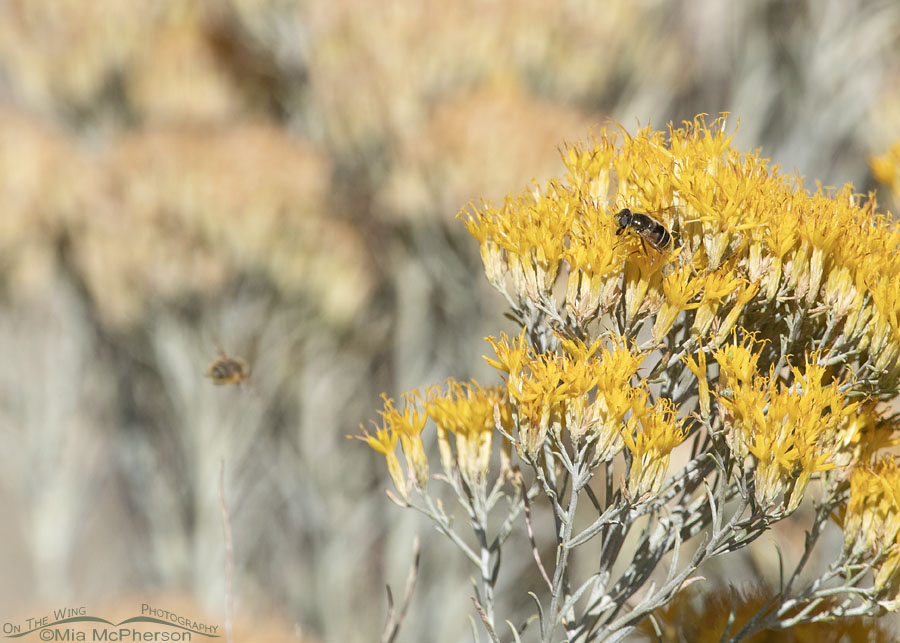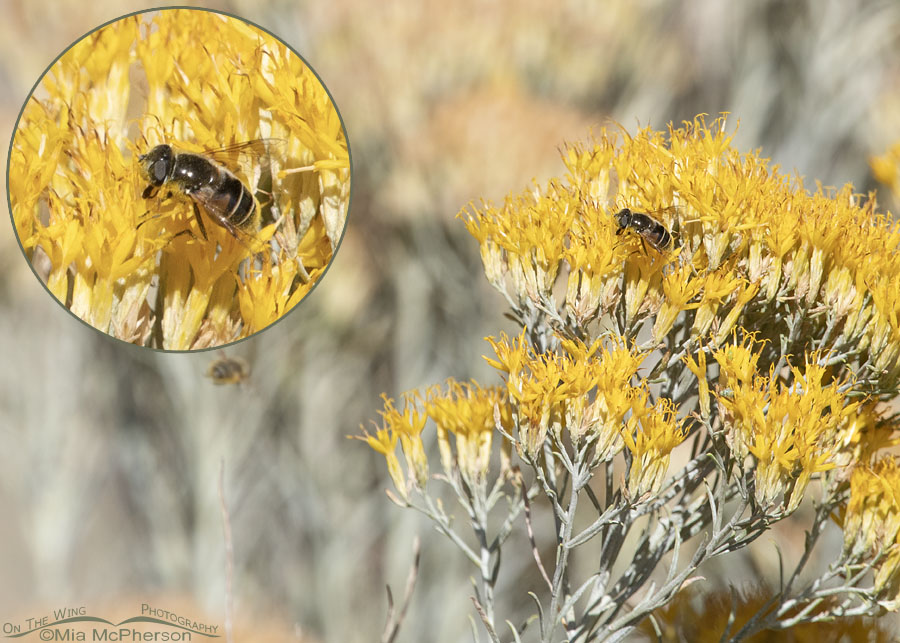While out in the West Desert two days ago, I photographed this adult Black-footed Drone Fly, a member of the hoverfly family, on a rabbitbrush.
 Autumn Black-footed Drone Fly – Nikon D500, f8, 1/1250, ISO 500, Nikkor 500mm VR with 1.4x TC, natural light
Autumn Black-footed Drone Fly – Nikon D500, f8, 1/1250, ISO 500, Nikkor 500mm VR with 1.4x TC, natural light
I had been taking images of an adult Red-tailed Hawk when a drone fly suddenly flew in, landed on the rabbitbrush, and caught my eye. I have always had a fondness for hoverflies, so I shifted my lens and focused on it for a moment.
I researched this hoverfly on iNaturalist which helped me to identify the species. The United States Forest Service (USFS) reports that there are almost 900 species of the family Syrphidae in North America. The exact number of hoverfly species in North America is unclear, but it is likely to be in the hundreds or thousands.
 Autumn Black-footed Drone Fly with inset – Nikon D500, f8, 1/1250, ISO 500, Nikkor 500mm VR with 1.4x TC, natural light
Autumn Black-footed Drone Fly with inset – Nikon D500, f8, 1/1250, ISO 500, Nikkor 500mm VR with 1.4x TC, natural light
In this image, I have added an inset with the fly shown larger.
There is a second out-of-focus Black-footed Drone Fly in both photos, which flew at the one in focus and bumped it off the rabbitbrush right after this shot was taken.
Hoverflies are masters of mimicry
They often have black and yellow stripes, much like bees and wasps, which helps them avoid predators who think they have the capability to sting.
Adult hoverflies feed mainly on nectar and pollen, and they are one of many pollinators that feed on these resources. They are second only to bees in terms of their effectiveness as pollinators, and they may be more efficient than bees because they can carry pollen much further and visit a greater diversity of flowers.
Life is good.
Mia
Click here to see more of my insect and spider photos.


Hoverflies. Drone Flies. Another day; another lesson…all gladly received. Great shots and wonderful info. Thanks Mia.
Great capture. Hooray for our pollinators. The world over.
Mia, learned something new again today about flies. I sure would mistake it for some type of bee. As they say you can’t tell a fly by its cover. Have a sweet day.